-15 % sur votre première commande
rentrez votre email pour recevoir le code
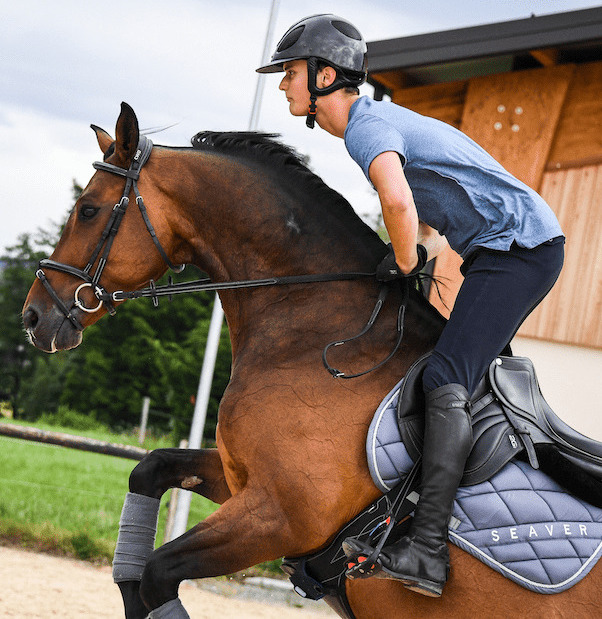

Le paiement x10 disponible sur la boutique ! Commandez votre airbag SAFEFIT pour 50€/mois
lundi, 23 octobre, 2017
Far too often, riders are not sufficiently attentive to their physical condition. Horse riding is like any other sport and requires both horse and rider to be in good shape. After mentioning the physical condition of the horse in our latest articles, let's talk a bit about ours...
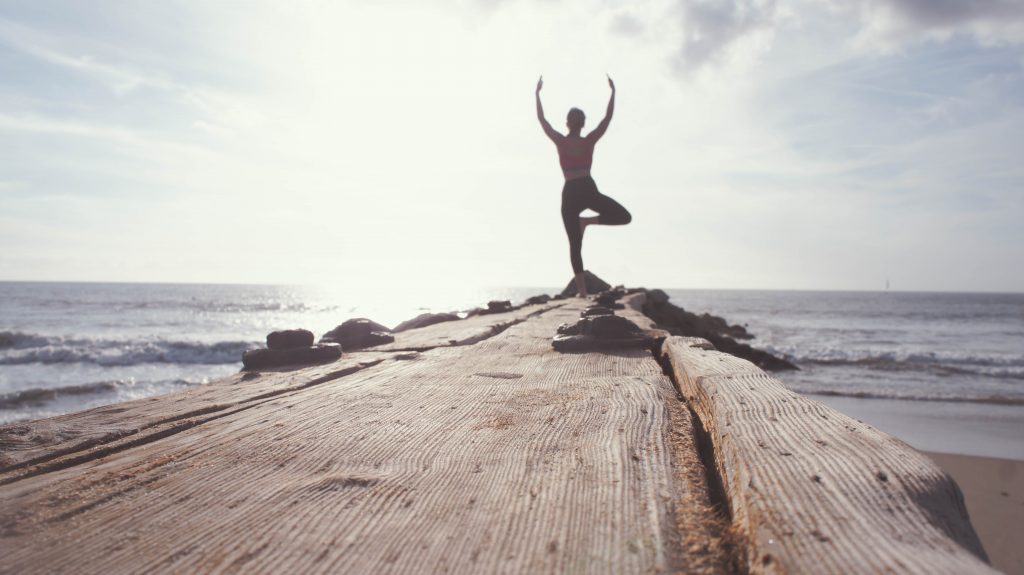
Contrary to popular opinion, performance is not only due to the physical preparation of the horse and training of the horse/rider couple; and here is why.
During a 20-minute jumping training, a rider burns about 200 kcal. In comparison, the energy spent by a 70-kg man for an hour of running corresponds to 600 to 700 kcal. This data shows that our body is indeed subject to a real effort when riding. It is therefore important to properly prepare ourselves physically for this effort.
The slightest tension will have a direct impact on your horse and repercussions on his muscular metabolism and freedom of movement. Supple and responsive riders with a correct position will achieve/reach performance more easily.
Physical preparation helps prevent muscular and articular injuries. When riding, the musculoskeletal system of the rider is greatly used. The spine and pelvis absorb the majority of the horse’s movement. In the seated position / when sitting, the lower limbs provide lateral stability - particularly thanks to the hips’ adductors – whereas/while suspension is dynamically insured by the legs’ muscle when in the 2- or 3-point position.
The goal of the rider’s warm-up will be to awake the proprioception and tonicity of the spine and pelvis, loosen the hips and shoulders, as well as relax the four limbs. It is very important that you always take a few minutes to warm-up prior to riding. Here are some exercises you can use to do so; on foot or on your horse.
Start with the upper body; the shoulders, neck and arms. Stretching your upper body will allow you to free your sight and develop the elasticity of your arms.
Gently move your neck from front to back and right to left, and then rotate it in both directions. Continue by rotating your shoulders in one direction and then the other, and do the same with your torso. Bring your shoulder blades closer together by pulling your shoulders back. Then, stretch your spine. To do so; roll down your spine, each vertebra after the other, hold this posture a few seconds, and then slowly stand back up, head last.

Next, warm-up your lower body; i.e. the lower back, hips, and legs. These stretches will allow you to better accompany your horse’s movement at the three gaits and when jumping.
Start with the “knee-chest” exercise: with your back straight and your abs tight, light up your knee and press it against your chest with your hands. Hold this position a few seconds, and then do the same with your left knee.
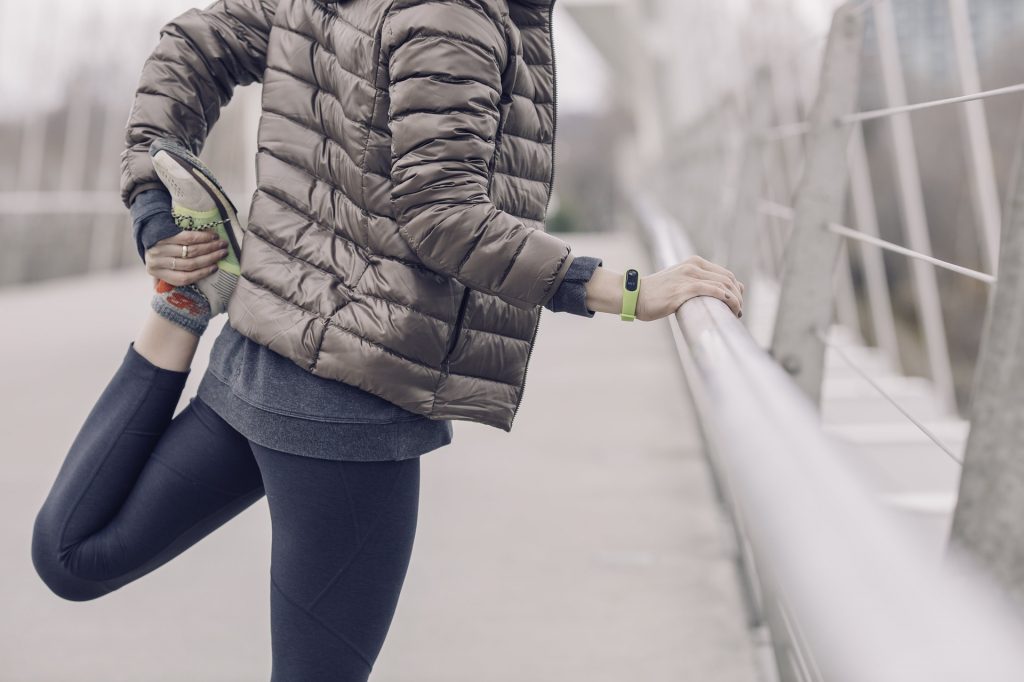
Continue with quadriceps stretches: grab your right ankle and bring your heel close to your buttocks. Maintain the stretch for a few seconds and then switch ankle.
Keep going by warming up your shoulder girdle: grab a crop in both hands, stretch your arms above your head and make circles with the crop.
Conclude your stretching session with pelvis and ankle rotations, and finally forward and lateral lunges.
Once you have completed these exercises, you can go for a quick brisk walk or do some jogging exercises (e.g. touching your buttocks with your heels, lifting your knees, leaping…) in order to smoothly activate your cardio-vascular system.
“Personally, I have been doing these exercises every morning for years. All of my former back, hip and shoulder pains have disappeared since then. I have never felt in such good physical and mental shape!” – Michel Robert, French show jumper.
There are also some exercises you can do on horseback, while your horse is warming up at the walk.
Start by reaching far in front of you to touch your horse’s ears, and then the right and left side of the rump, one shoulder after the other. Afterwards, make large circles with your shoulders in order to stimulate your shoulder blades. Continue with torso rotations to complete the spine’s awakening. Do not forget your lower body. Lift your knees up alternatively and swing them back and forth in order to release the hips. End with some rotations, extensions and bending and of the ankles.
If you lack time before your riding session, you can always groom your horse dynamically to increase your body heat and heart rate, as well as activate your joints and muscles.
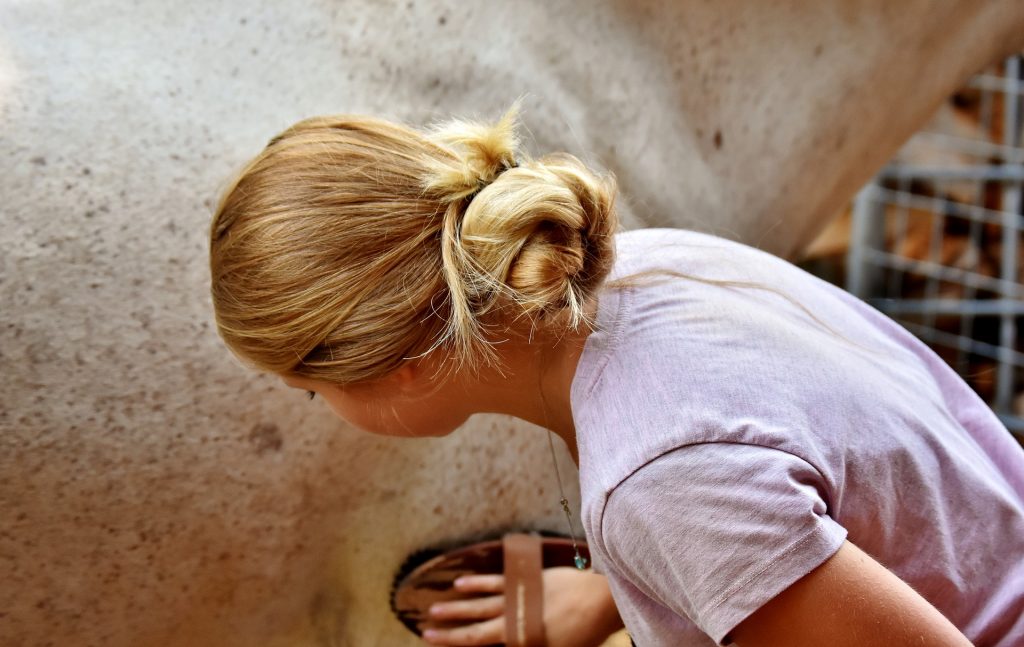
We would advise you to reproduce these stretching exercises after your riding session to relieve the stress and tension you accumulated, facilitate recuperation and avoid muscle soreness. It is also necessary to practice other sports in addition to horseback riding to best prepare your muscles. Swimming, biking, jogging, or yoga for instance, are all good activities to develop a rider’s flexibility and respiratory capacity. Michel Robert, a French show jumper, frequently emphasizes the benefits of yoga in improving his riding.
Finally, do not forget that a good control over your breathing, a balanced and varied diet, as well as a proper hydration play a key role in sports performance, especially in stressful situation such as competitions.
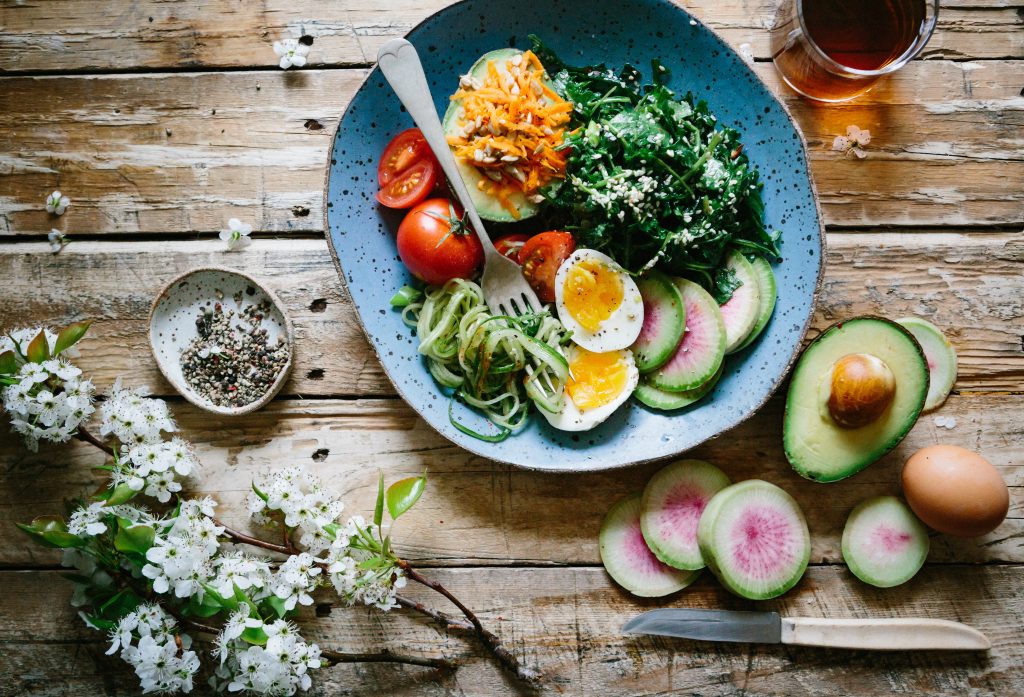
See you soon for another article,
The Seaver team